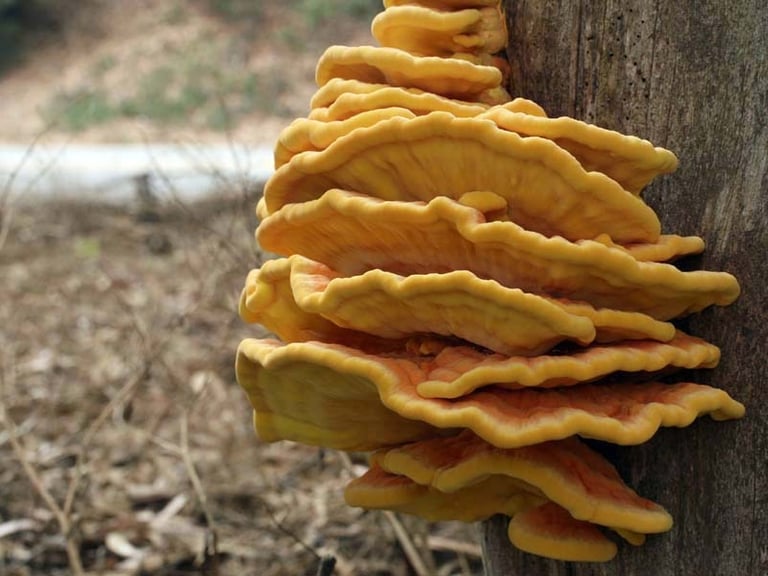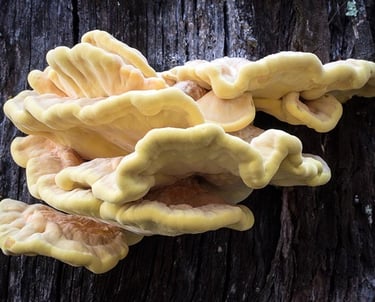Laetiporus Sulphureus


Image By Fred Stevens
Hygrophoropsis aurantiaca, also known as the false chanterelle, is a mushroom species that is found in North America and Europe.
Description
1. Cap: Laetiporus sulphureus does not have a traditional cap. Instead, it forms large, overlapping brackets that can be several feet in diameter. The upper surface of the bracket is bright orange to yellow-orange in color.
2. Gill: Laetiporus sulphureus does not have gills. Instead, the undersurface of the bracket is covered with numerous tiny pores. Initially, the pores are yellow and later become more sulphur-yellow with age.
3. Stem: Laetiporus sulphureus does not have a distinct stem. The fruiting body directly attaches to the tree trunk or stump on which it grows. It forms large, overlapping brackets that extend outwards.
4. Spore Print: The spore print of Laetiporus sulphureus is not commonly observed since it does not produce a significant amount of spores. However, the spores are believed to be white or light-colored.
5. Habitat: Laetiporus sulphureus is typically found on the trunks or stumps of deciduous trees, particularly oak trees. It is a wood-decaying fungus that often grows in forests or wooded areas.







